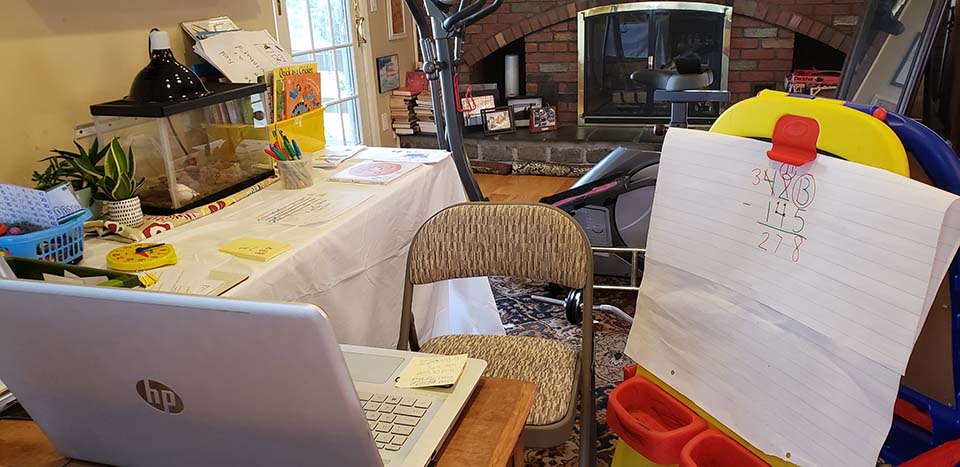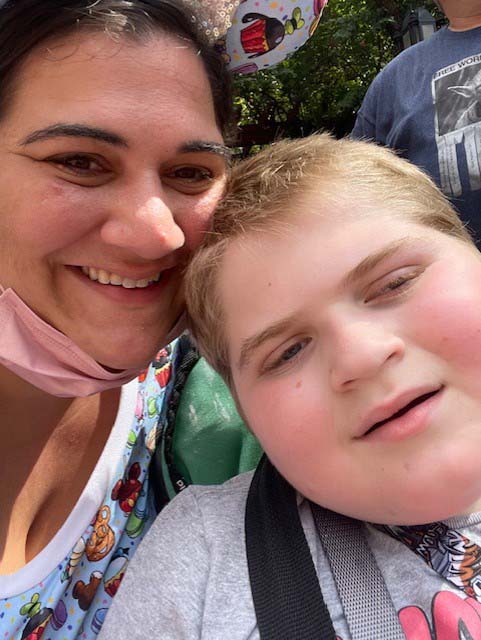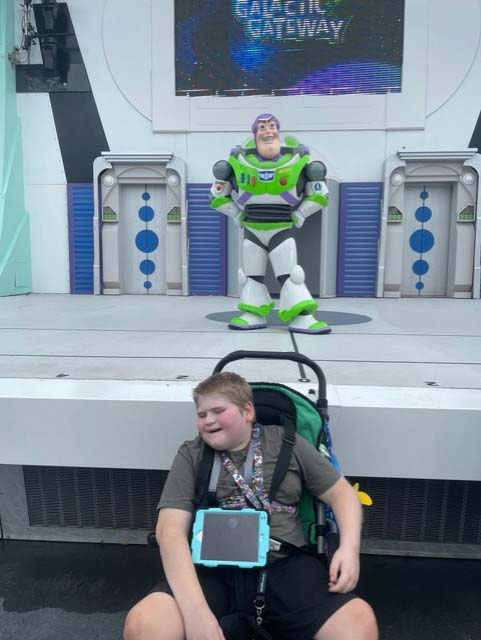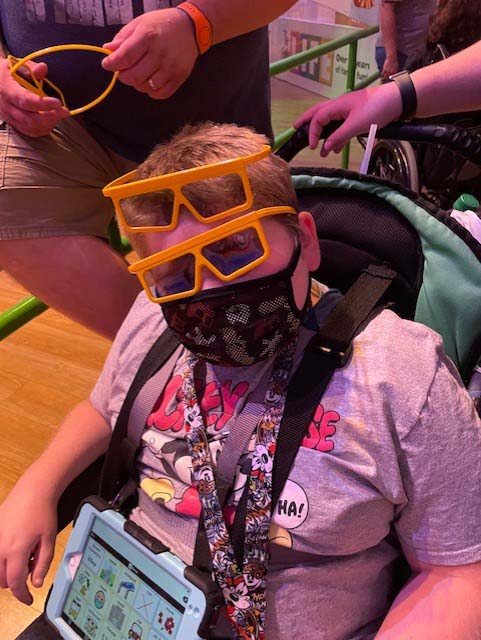Cole Kubicza was in fifth grade when the COVID-19 pandemic forced schools to go remote. It was around that same time that he and his parents tested positive for COVID-19.
It can be tough to remember what testing positive meant a year and a half after Connecticut locked down. For Cole it meant that he would be sick for the next three months, essentially halting his education as suddenly as the pandemic seemed to come. And as a child who receives lessons from a paraprofessional while using a talker, that abrupt stop was even more impactful.
“Cole missed a lot of school in general, because I couldn’t teach him. He was sick, I was sick,” said Jennifer Kubicza, Cole’s mother. “So that school year, really for Cole, unfortunately, was pretty much eliminated, because there was no one to really teach him, and he isn’t a kind of kid that can log into a Zoom meeting.”
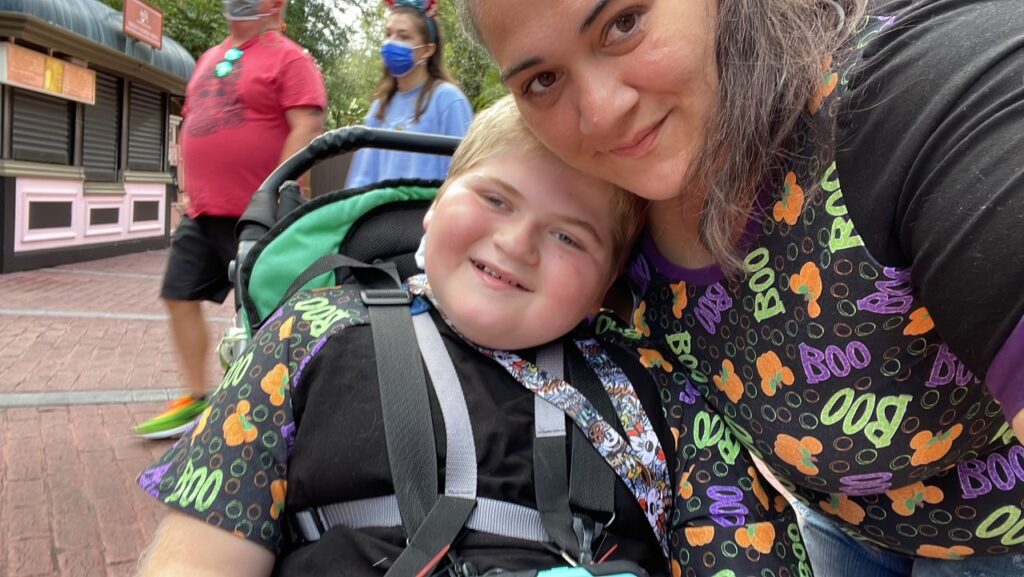
Cole has Angelman syndrome, a genetic disorder that impacted his intellectual development over the years in addition to other effects. Cole, like many others diagnosed with Angelman syndrome, has also dealt with seizures that led Jennifer Kubicza taking split shifts long before COVID-19 made it a norm.
When Cole’s Highland Elementary School in Cheshire, Connecticut, went virtual due to the pandemic his mom was there to help. But what more could Jennifer Kubicza do when caring for an 11-year-old boy who struggles with communication while possessing a limited attention span?
“I don’t even know how I didn’t end up having some sort of mental breakdown during that time period because honestly, Cole is a full-time job as it is,” Jennifer Kubicza said. “Just being Cole, because he requires 24/7 supervision.”
The “normal” way of life ceased to exist. Children with special needs didn’t fit into the mold of the “new” world of Zoom and Google Meets, but that doesn’t mean special needs teachers didn’t try. Quinnipiac University Director of Special Needs Services Judith Falaro may no longer be working in the public schooling system, but she’s still well aware of the COVID-19-related struggles in educating children with special needs.
“Generally speaking, despite a lot of good efforts — and that’s just my opinion — more children in general fell behind then actually maintained or went ahead,” Falaro said.
The professors and the parents
I think school districts were completely unprepared for this kind of a thing
Judith Falaro, director of special needs services at Quinnipiac University
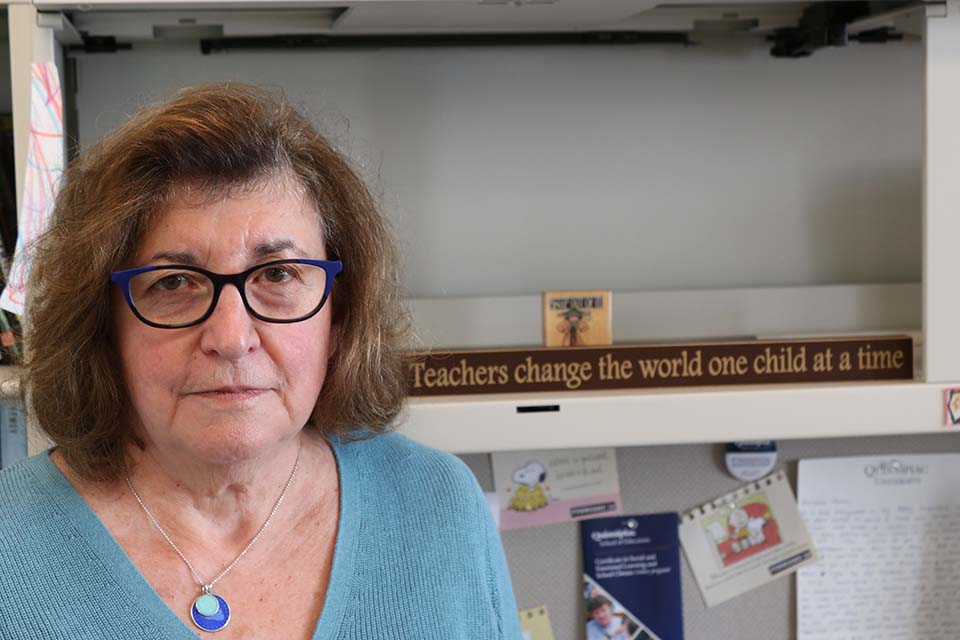
Nobody saw a pandemic coming. At least, not the severity of it.
The pandemic forced schools to close around the country. It led teachers to find new teaching methods to reach students studying from home.
“I think the biggest struggle was really being creative,” said Angela Milewski, the special education chair grades 6-12 for Wallingford Public Schools. “And doing all of the things that we would have done in person, just over the computer while navigating your own personal [life].”
Milewski said that Wallingford kept certain special education students in person, albeit in small groups, while abiding by COVID-19-related policies. Students in “highly specialized programs” that met certain checklist requirements still experienced in-person learning during spring 2020.
But that was just around 19 students, Milewski said. Many special needs students remained isolated from in-person lessons. From the March 2020 lockdown to the end of the school year in June these children learned online. Additionally, students were online from November to January.
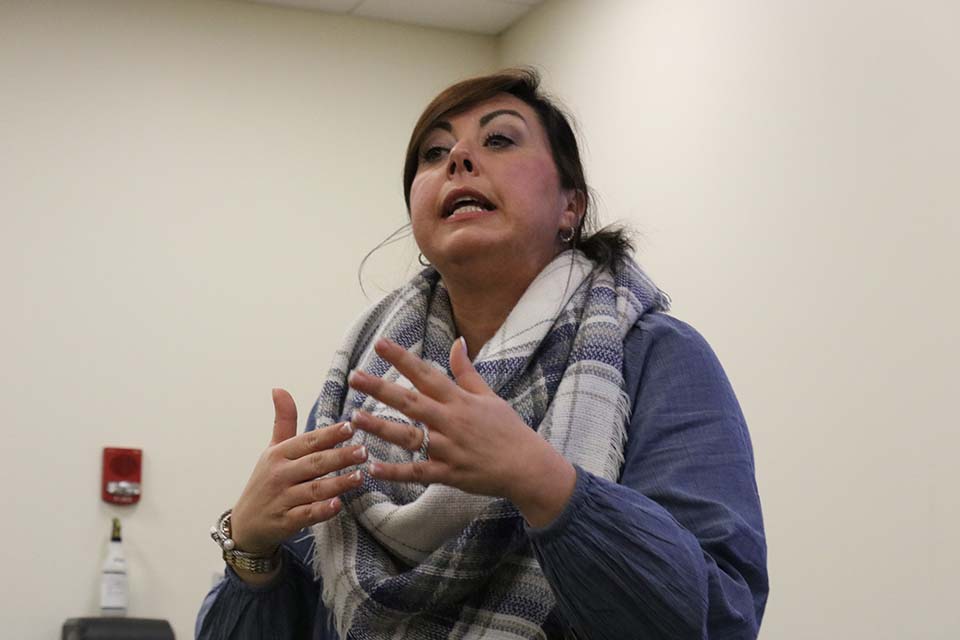
“We’re telling them, ‘OK, you’re home by yourself, please make sure that you sign on at nine. Hi, where are you, you’re not here, you’re marked absent,’ then they sign on,” Milewski said. “Now, it’s 25 minutes late, but now you have a meeting with the next student … just logistically, the pressure that the teachers were under to do — and they wanted to help the students — but then the students really have to be reliant on themselves.”
Milewski said that there would be students who had speech and language services who would also have a resource room. So they would sign into the resource room, be told to go to speech and then forget to sign into language. Or they would get lost along the way.
These mistakes can’t be taught or fixed. They are flaws in a system full of them.
“When we talk about special education students, it’s another barrier,” Milewski said. “And those students and those teachers already have those. It just adds a layer of difficulty.”
That layer of difficulty extended to the visually-impaired community as well. Joanne Pompano teaches students who qualify for visual impairment — 20/70 vision in their best eye or worse — in an urban Connecticut school district.
Instructing Braille without the hands-on factor is seemingly impossible, but Pompano found a way by angling a camera down specifically on the student’s hands. She then taught accordingly by directing a student’s hands to where they needed to be. Pompano also mailed packets, lessons and books in Braille to her students, and while she sometimes had to come up with last-minute lessons due to mail delays she said it all “worked rather smoothly.”
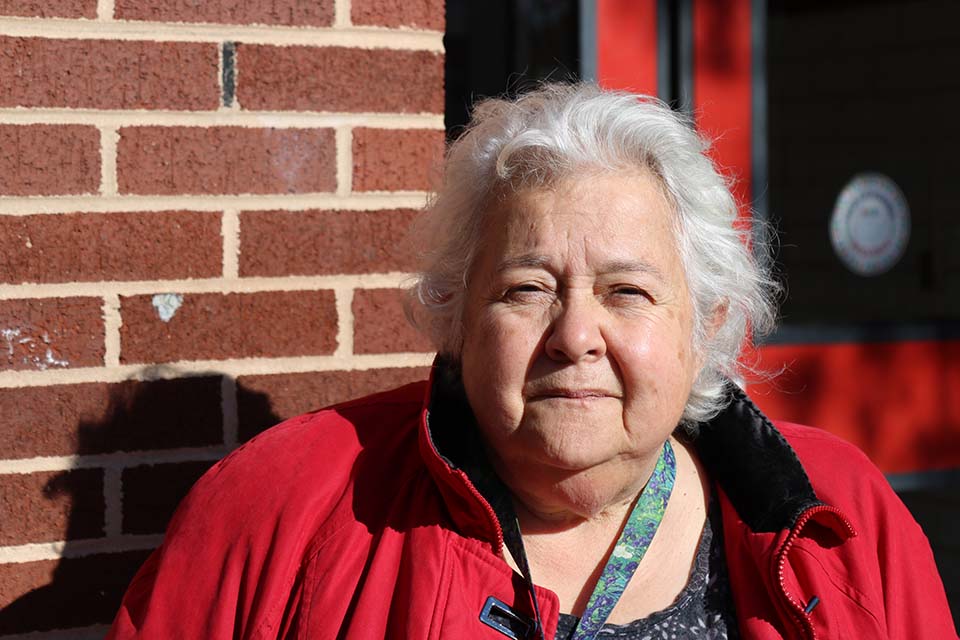
But the smooth operation masked the difficulty that kept it operating that way. While she found a system that worked for her and her students, it was far from an easy time.
“I think we were all burnt out,” Pompano said. “Because it was so different and it was so hectic, and then you have the added thing of what is happening, with the pandemic itself.”
Jessica Schryver, a special education preschool teacher in the Middletown Public Schools system, also had to be creative in reaching students. She deployed Padlet, an online service that acts as a bulletin board of sorts where teachers could pin activities and plans for parents to check at home. While it got the message across virtually it struggled to replicate the in-person experience.

“I think that was probably the most challenging because with our students with special needs, well, they’re missing that human interaction,” Schryver said.
Schryver’s school was an integrated system, featuring a mixed class of students with and without special needs. So on top of thinking up new ways to reach her special education students, she had to come up with alternate lesson plans. There was a Padlet for her special needs students as well as a completely different one for another group. Schryver held one-on-ones with her students, particularly those with special needs who needed the extra attention, but missing the in-person aspect was the “most challenging” part of teaching for her.
“I was essentially responsible for providing in-person instruction, and at-home instruction, some other like K to five, had a person that did a home instruction. But no, that was me,” Schryver said. “So while I’m trying to run [a] calendar, and weather, and [the] meeting, I’m zooming with two preschoolers. Basically, welcome to the circus.”
The already daunting professional challenges intensified for Schryver because of the pandemic in her personal life. The mother of a newborn and a son in kindergarten, she had to balance the domestic responsibilities with the at-times overwhelming pressure of teaching preschool special education students.
“Having my kids, people always say, ‘What’s your why,’” Schryver said. “That’s my ‘why,’ making money for them and so we can go on vacation and save for their college fund and things like that.”
Schryver said that the occupational therapist on her team dropped off gift baskets as a means to go the extra mile in reaching her students. Milewski did the same, leaving gift baskets that included items like a T-shirt, some pens and pencils, candy and other miscellaneous items to her special education students, socially distanced and safely by the front door. Neither had ever done something like this before the pandemic.
“Sometimes the parent and the student would come to the screen door. And we would talk and we would say ‘Listen, we’re here, sign on,’ or just give helpful tips,” Milewski said. “I remember saying to one student, ‘You have a cell phone, do you know how to set the alarms on the cell phone? So let’s sit down and come up, 7:30 math, 9:00 this class.’ And just things like that.”

For some, those extra efforts paid off. There were students who benefited from the switch to online learning. Kathryn McBride, a special education teacher at STEPS at East School in Torrington, which is a specialized day program for special needs students, has experienced those benefits firsthand, and not as a teacher.
Her son, T.J., has spinal muscular atrophy type one and is ventilator-dependent. McBride said her son thrived in his honors classes, which requires much less coordination. No need to organize transportation, a tutor or a paraprofessional — just log on. T.J., who could only physically manage three days a week of in-person instruction before the pandemic, was able to learn for five days online.
However, T.J.’s Watertown High School no longer offers Zoom as an option. Per the school’s principal Janet Parlato, the Connecticut department of education made the decision to not allow virtual learning — it was not a local issue.
“I think that it’s sad that it got taken away, because online learning and being able to be at home, interact with your class and participate 100% was a huge benefit,” McBride said. “I think he and probably some other kids got a taste of what it was like to be fully participating. And I think for the chronically ill, it should be an option.”
Parents of special needs students like McBride had more responsibility than ever to ensure their children were learning in their virtual classrooms.
“They had to try to become teachers,” Falaro said.
Jennifer Kubicza was already working split shifts before the pandemic — she would work from 8 a.m. to noon and again from 8 p.m. to midnight — but with her son learning from home, her free time evaporated.
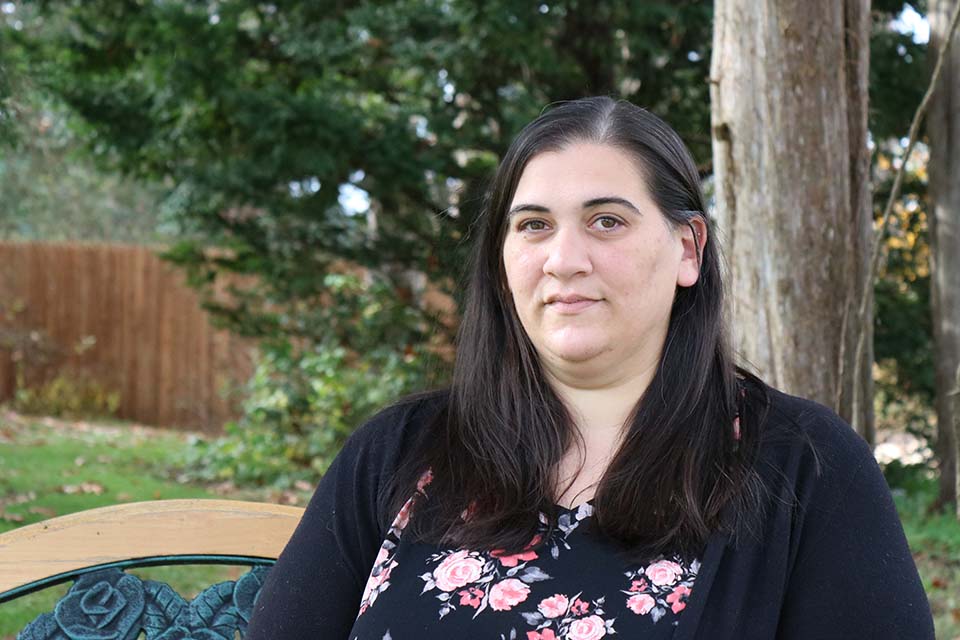
“When the kids were home all day, the time that I used to have when the kids were at school between 12 and 4 to get everything done around the house — that disappeared,” Jennifer Kubicza said.
Special needs students have always needed assistance in the classroom, but not as much to actually get into the classroom. Many kids struggle to log into the correct class, and further struggle with paying attention in an online format without hands-on guidance. Teachers did their best, but it was a team effort between parents to get the job done.
“I give parents so much credit for really helping with the situation,” Milewski said. “I think they did the best that they could.”
It takes a certain attitude to get through the pandemic — for parents and teachers alike — and Schryver has a personal motto she lives by.
“We’re gonna laugh so we don’t cry,” Schryver said with a chuckle. “Like, it’s not pessimistic, aim low. So you just have a great day. Be like, ‘It’s gonna be awful,’ and then it’s awesome.”
***
‘Hold on.’
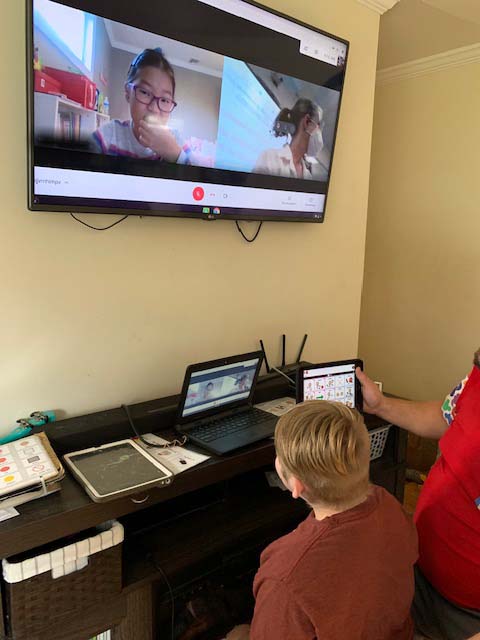
Cole had chewed through his straw for his chocolate milk. This can happen, and as Jennifer Kubicza went to get the last straw remaining, she shared one of the pandemic’s biggest impacts on her son.
“He was previously mobile and was able to walk between him growing really fast,” Jennifer Kubicza said. “Having COVID and not having any [physical therapy], he has stopped walking altogether, so he doesn’t independently walk anymore.”
Jennifer Kubicza said that a combination of dealing with three months of COVID-19 ailments, limited physical activity due to a lack of in-person instruction and a growth spurt led Cole to lose his ability to walk. It is possible for people with Angelman syndrome to struggle with coordination and balance, but the unspoken side effects of the pandemic had played a major role in Cole’s immobility.
Thankfully, Cole is starting to go back to school. He’s stretching, and he’s more active than he was over the last year and a half. He’s even starting to stand again, mostly with support from a nearby support system like a railing.
“I’m hoping maybe he’ll go back to walking again, we don’t know how permanent this is,” Jennifer Kubicza said. “Because there’s no book on how to deal with a kid during a pandemic who doesn’t walk anymore.”
Physically
[Cole] had speech, [occupational therapy and physical therapy], but it was all virtual, and the amount of OT and PT that he had was nothing compared to what he was having, because it was me being the PT for him, we did it through Zoom
Jennifer Kubicza, Cole’s mother
Sitting behind a screen does more than impact your learning. Children, many of which are still developing motor skills, experienced a severe lack of physical events with the transition to online learning.
Playdates ceased. Recess? No longer on the schedule. While schools provided physical activity plans there were few ways to enforce it. Julie Booth, undergraduate program director of physical therapy at Quinnipiac University, works with students in Connecticut schools and has seen the physical struggles that children dealt with.
“A lot of [kindergarteners] spent time on their laptop and on their iPads and sitting on the couches, so their core is really weak,” Booth said. “Of course, we are seeing that [with] a student that the teacher said, ‘Can you just watch him?’ So he started reading with one hand and wrote like two letters and then switched the crayon to the other hand. And he said it’s because his hand got tired.”
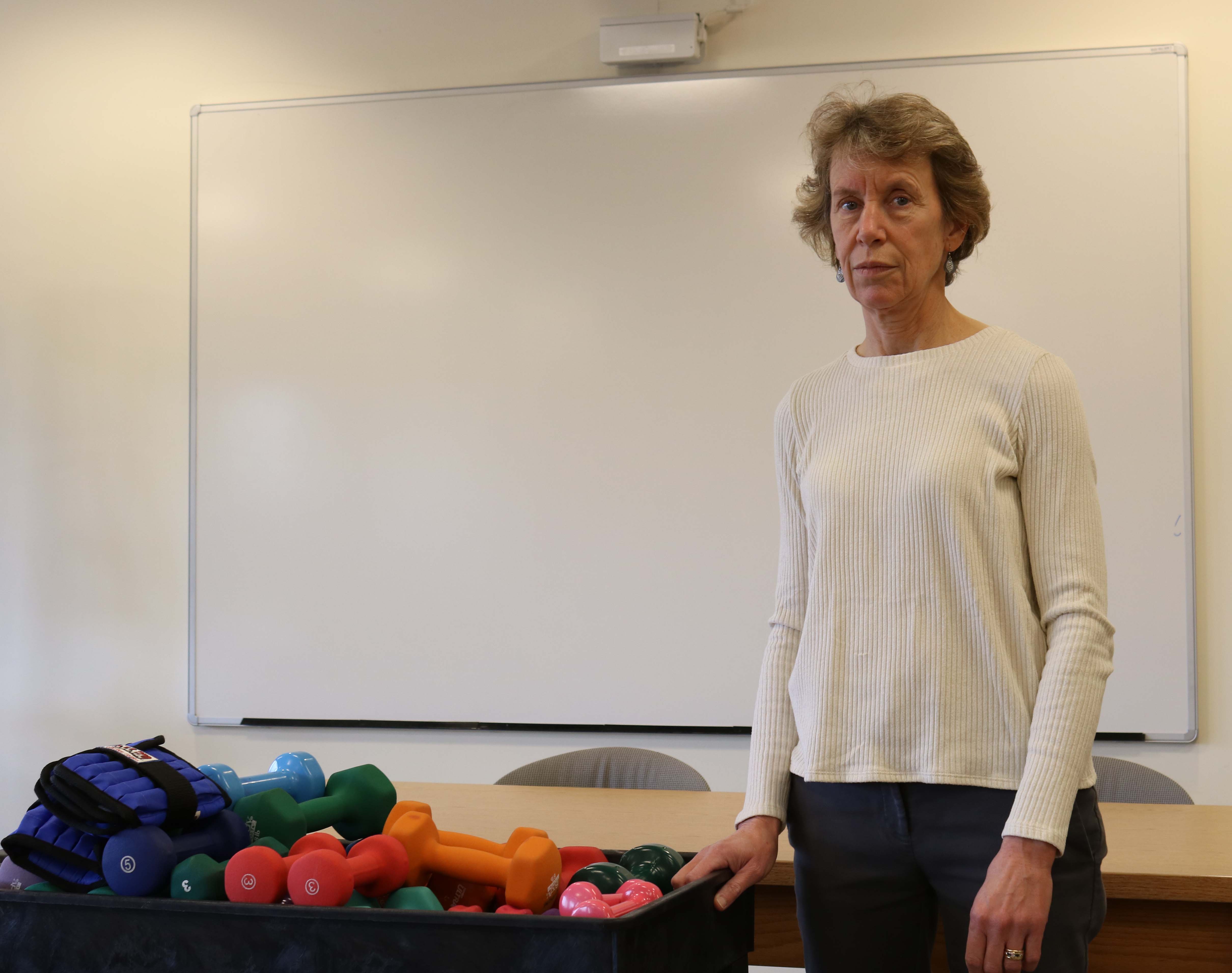
A 2018 study from Meuhedet Health Services in Jerusalem confirmed that excessive screen time is associated with a myriad of negative health effects such as high blood pressure, obesity and reduced bone density to name a few. There are also many psychological effects of extended screen time such as depressive and suicidal symptoms, all under the cloud of a poor sleep schedule.
“So many of them lost muscle tone, and strength and things that were maybe extra services for them,” Falaro said. “Now they’ve lost a lot of ground that they may have been making up when they were having their PT and OT.”
Booth explained a simple thought process: how are kids expected to pay attention when they physically struggle to sit up straight? For kids in kindergarten it’s a tall order, and it didn’t get any easier when it came time to return to in-person instruction.
“It’s fatiguing, and most kindergartens are now full day,” Booth said. “They haven’t even been at three hours of school, never mind coming in for six and a half, seven hours a day … That’s the structure. And it’s a challenge.”
Physical strength was not the only thing developing students lost. Routines, craved by people of all ages, were completely upended. For young children, that meant that the “new normal” everyone talks about was really the only normal.
There were students that started in preschool before the pandemic hit and therefore never experienced a traditional social experience in school. Those routines of lunchtime and raising a hand in class were never established. Returning to in-person instruction, masked and socially distanced, meant a disruptive break in a pattern.
“They’re just learning the whole routine of being in school,” Falaro said. “And they’re used to the routine of sitting, maybe in a circle on the rug for part of the time or sitting in little groups at a table, things like that. And now they were unable to do those things.”
Booth said it’s not too late to get these kids, ranging from kindergarten to second grade and even beyond, back on track. She said that incorporating more physical activity in a daily schedule would go a long way toward doing just that, but it won’t come without adjustments to the curriculum.
“School systems need to look at the curriculum that they’re asking of these younger kids and modify it, and gradually push them back up,” Booth said. “But to start where you normally would, I think it’s going to be a disaster.”
***
As Jennifer Kubicza signed off the Zoom, she said that herself and Cole were going to Disney World, a symbolic toe in the water of returning to the big, crowd scene. People with Angelman syndrome like Cole are typically exceptionally happy and full of laughter — someone who would normally be a perfect fit in a Disney environment.
“It’s going to be back to being with a lot of people,” Jennifer Kubicza said. “Because he doesn’t really get that big crowd experience. He hasn’t had that in a really long time.”
Normal is never going to be a real thing again — it may have never been. But the efforts of Connecticut’s finest teachers helped a niche demographic that can be often overlooked.
If anything should become normalized, it’s that.

